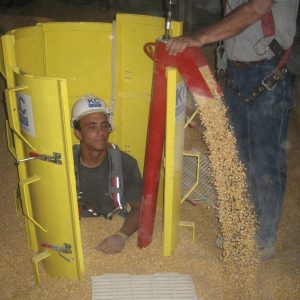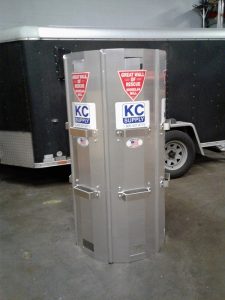A Handy Grain Bin Entry List
A grain bin is used for storing grain, which has been dried. The grain can be used for human or animal consumption and sometimes for fuel. Meanwhile, silos are used for storing silage.
Grain Bin/Silo Entry List

Although grain bins and silos are different, they share one thing in common, and that is safety precautions during entry. There are instances when workers must enter these facilities to perform maintenance of checks. Proper protocol must be followed during the entry to ensure the safety of the worker.
The following is a brief checklist that can be used when a worker is going to enter a grain bin or a silo:
- All equipment producing mechanical energy is turned off before the entry of the worker.
- The electricity should be turned off as well as all equipment running on power before the worker enters.
- All pneumatic tools must be turned off.
- Is there a procedure in place if a worker gets engulfed in waist-high grain?
- If there is a bridging condition, then the worker shall not enter or if there is grain on the side, which can bury the worker inside the grain bin.
- Is there a procedure in place in case there is a leak of combustible or poisonous gases? Has the facility been checked for such leaks?
- Is there another person monitoring the entry of the worker?
- There must be rescue equipment specially suited for entry on standby in case of an accident inside.
- Is the person monitoring the entry capable of leading a rescue or is trained to conduct a rescue?
These are just some of the things that must be checked before a worker enters a grain bin or a silo. Remember that these precautions are in place because of the real hazard involved during entry.
For more information on safety materials, don’t hesitate to ask KC Supply Company.






 In what is fast becoming an annual tradition, agricultural professionals and industry leaders join forces in support of Grain Bin Safety Week, to be held on the 16th to the 22nd of February, 2020.
In what is fast becoming an annual tradition, agricultural professionals and industry leaders join forces in support of Grain Bin Safety Week, to be held on the 16th to the 22nd of February, 2020.
 Respirators are essential, especially when you are working in hazardous environments that are littered with dust, hazardous fumes, gases, and vapors. They
Respirators are essential, especially when you are working in hazardous environments that are littered with dust, hazardous fumes, gases, and vapors. They